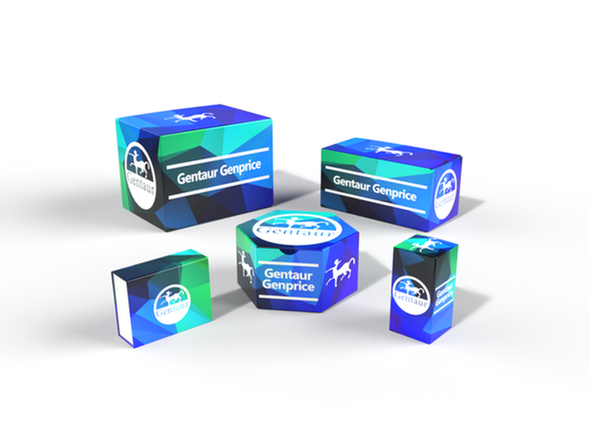740
Human Oxidized lowdensity lipoprotein antibody (OLAb) ELISA Kit | AE62499HU
- SKU:
- 740-AE62499HU
- Availability:
- Usually ships in 5 working days
Description
Human Oxidized lowdensity lipoprotein antibody (OLAb) ELISA Kit | AE62499HU | Gentaur UK, US & Europe Distribution
Species Reactivity: Human (Homo sapiens)
Abbreviation: OLAb
Alternative Name: N/A
Application: ELISA
Range: 15.6-1000 pg/mL
Sensitivity: 6.4 pg/mL
Intra-Assay: ≤4.1%
Inter-Assay: ≤8.0%
Recovery: 0, 87
Sample Type: Serum, Plasma, Other biological fluids
Detection Method: Competitive ELISA
Analysis Method : Qualitative
Test Principale: This assay employs the competitive enzyme immunoassay technique. The microtiter plate provided in this kit has been pre-coated with an antibody specific to OLAb. Standards or samples are then added to the appropriate microtiter plate wells with a Horseradish Peroxidase (HRP) -conjugated OLAb and incubated. The competitive inhibition reaction is launched between with HRP labeled OLAb and unlabeled OLAb with the antibody. A substrate solution is added to the wells and the color develops in opposite to the amount of OLAb in the sample. The color development is stopped and the intensity of the color is measured.
Product Overview: Hypercholesterolemia is closely associated with increased risk of atherosclerosis. The cholesterol accumulated in the atherosclerotic plaque is derived primarily from low-density lipoprotein (LDL) . Oxidation of LDL is now accepted as a critical event in the atherogenic process. Free radicals like superoxide and nitric oxide (-O2, NO) generated in biological reactions in the body contribute to the oxidation of LDL. The NO radical has been shown to oxidize apolipoprotein B a constituant of LDL. Similarly, lipoxygenases and oxidants like peroxynitrite can oxidize the lipid moieties in LDL. It has been demonstrated that oxLDL and not native LDL is taken up by scavenger receptors on monocytes, smooth muscle cells and macrophages in the blood vessels. The oxidation of LDL increases the affinity of oxLDL to acetyl receptors of macrophages. As this pathway of oxLDL uptake is unregulated, it results in the formation of lipid-laden macrophages (foam cells) .
Stability: The stability of ELISA kit is determined by the loss rate of activity. The loss rate of this kit is less than 5% within the expiration date under appropriate storage condition. The loss rate was determined by accelerated thermal degradation test. Keep the kit at 37°C for 4 and 7 days, and compare O.D.values of the kit kept at 37°C with that of at recommended temperature. (referring from China Biological Products Standard, which was calculated by the Arrhenius equation. For ELISA kit, 4 days storage at 37°C can be considered as 6 months at 2 - 8°C, which means 7 days at 37°C equaling 12 months at 2 - 8°C) .






